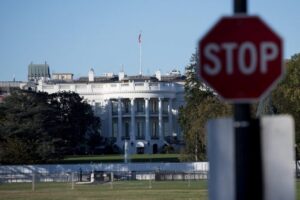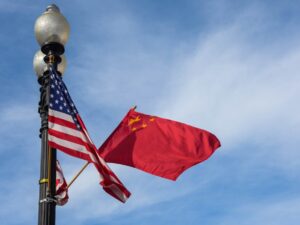
The cult of personality around the supreme leaders of the Kim Dynasty has long been a fundamental ideological pillar of North Korea’s totalitarian regime. Key elements of this cult include the quasi-religious commemoration of the birthdays of Kim Il-sung, the “eternal president” considered the founding father of North Korea, and that of his son Kim Jong-il.
The anniversary of April 15, Kim Il-sung’s birth date, is celebrated annually as “Sun Day,” echoing the honorary title of “Sun of the Nation” bestowed on the late Supreme Leader. This annual event results in popular festivities and propaganda in state media extolling the “revolutionary achievements” and “brilliant genius” of the man designated as the living embodiment of the Korean nation.
Therefore, the observation by South Korean experts about a notable avoidance of the phrase “Sunday” in reports of the 2024 celebrations by official North Korean media, such as the KCNA agency, created surprise. Instead of this traditional name, these media have been seen using more generic formulations such as “April Day” or “Spring Festival.”
This unusual avoidance of the usually highly coded rhetoric of the Kim Il-sung cult could signal a symbolic questioning of the “Eternal President’s” previously untouchable status by grandson Kim Jong-un, who could be seeking to distance his regime from icons. ancient. Such an evolution would represent a major ideological break in the last communist dynasty in the world.
In this article, we will take an in-depth look at this phenomenon of official North Korean media avoiding the term “Sunday” during the 2024 celebrations, putting it in the broader context of recent political and ideological developments under the leadership of Kim Jong-un. . First, we will study in detail the content of the various means to quantify this unexpected lexical break. We will then examine how Kim Jong-un can fit into the path of consolidating personal power and redefining key ideological and cultural markers of his regime, including reaffirming the prevalence of the founding myth of Mount Paektu. Finally, we will explore the various assumptions that would allow us to interpret this development, whether as a questioning directed at the cult around Kim Il-sung, a generational transition of leadership, or potential reorientations of the current regime’s legitimation strategy.
Detailed analysis of content in North Korea’s official media (year 2024)
To support the initial observation of a notable avoidance of the term “Day of the Sun” in media coverage of Kim Il-sung’s birthday celebrations in 2024, we conducted a systematic content analysis of North Korea’s major state propaganda media. , KCNA, as well as Rodong Sinmun and Minju Choson newspapers covering the period from April 1 to April 30, 2024.
Our examination revealed a near absence of the phrase “Day of the Sun” (태양절) in the minutes of the April 15 festivities by the KCNA. Of a total of 27 dispatches published by the official agency that month in relation to the celebrations, we noted only 3 occurrences of the term “Day of the Sun”, all in a single article on April 16 related to Kim Jong-un’s official speech from the previous day (KCNA 04/16/2024).
In the other 24 dispatches covering events before, during and after April 15, KCNA consistently used much less specific wording, referring to the “major April holiday,” the “spring festival,” or the “birthday celebration of the President Kim Il-sung» (KCNA 04/08/2024; 04/15/2024). No other explicit mention of the “Day of the Sun” appeared.
The same notable avoidance of terminology associated with the cult of Kim Il-sung was also observed in North Korea’s official print media in April 2024. Thus, the Rodong Sinmun, the voice of the ruling Workers’ Party, used the phrase “Day of the Sun” only once in its special editions on April 15 and 16, compared to 16 times in April 2023 (Rodong 04/16/2024; 04/16/2023). Similarly, the Minju Choson, a satellite newspaper, did not use the term even once in its coverage in 2024.
This semantic contrast is all the more notable because it marks a sharp break with the generally highly coded rhetoric of the North Korean media for these types of events celebrating dynastic worship. As shown in the previous year’s and previous year’s data, the term “Sun Day” was previously prominent in descriptions of the April 15 festivities (KCNA 2022-2023; Rodong 2022-2023).
According to expert Park Hwee-rhak, a professor at Kookmin University, “It’s as if the usual and emblematic term ‘Day of the Sun’ is almost banned in 2024 propaganda, which is quite surprising when you know the cultural importance of the day.” name” (Park 2024). This surprising lexical break in official discourse appears even more intentional since it is not observed for Kim Jong-il’s birthday, still referred to as “Bright Star Day” as usual.
Comparison with previous years
This stark contrast to previous years underlines the determined and systematic nature of avoiding the term “Day of the Sun” in 2024. Clearly, this is not a simple slip or an innocuous evolution of the vocabulary used, but rather a desired break in the rhetoric of the official media.
«This year, all semantic markers that previously referred to the cultural and quasi-religious dimension of the commemoration have been methodically eroded from the reports. This is a notable change from previous years when the expression ‘Sunday’ was omnipresent and was constructed as a true slogan in propaganda,” analyzes Kim Seok-hyang, a professor at Inje University specializing in North Korean media.
This notable semantic development also breaks with the continuity in the treatment of Kim Jong-il’s birthday in February, still referring to the traditional term “Bright Star Day” without significant changes in the rhetoric used (Rodong 02/16/2024).
The scale of the rift could reveal deeper ideological shifts in the Kim Jong-un regime’s dynastic cult strategy. Perhaps he seeks to break with some symbolic legacies of the Kim Il-sung period, while maintaining a similar approach to the figure of his father Kim Jong-il.
Support for academic discourse analysis of North Korean propaganda
In order to properly interpret this remarkable development of North Korean propaganda discourse, it is essential to refer to academic studies carried out by experts on the subject. In fact, they extensively analyzed the highly codified rhetoric and highly structured cultural symbols surrounding the cult of the supreme leaders of the Kim Dynasty.
Thus, Professor Suh Dae-sook, author of a reference analysis on the North Korean media, considers that the phrase “Sunday” is “a highly symbolic term loaded with a quasi-mystical dimension in official discourse, directly related to the divination of Kim Il-sung as the guardian figure of the nation” (Suh 2004).
According to him, the systematic deployment of this expression in propaganda around April 15 was fully involved in the construction of a true cult of personality built around the “Eternal President.” A cult carefully maintained by the regime and its media since the death of Kim Il-sung in 1994.
“This term ‘Day of the Sun’ referred to an entire sacred symbol shaped over decades by the North Korean propaganda machine, turning it into a celebration of ideology and revolutionary achievements lent to the Great Leader,” says Brian Reynolds Myers, an ideology specialist. North Korean at the Dongguk University of International Studies (Myers 2015).
It is therefore the notable avoidance of this highly symbolic and codified term in 2024, which represents a true break in the regime’s traditional rhetoric. A surprising semantic turn, which these academic analyzes suggest could mark a way to rewrite the North Korean dynastic cult under the era of Kim Jong-un.
Note: this is an article republished from the media “Defence, Research and Studies” through a cooperation agreement between both parties for the dissemination of journalistic content. Original link.
Source: https://reporteasia.com/opinion/2024/05/06/corea-del-norte-palabra-domingo-medios-oficiales-comunicacion/

